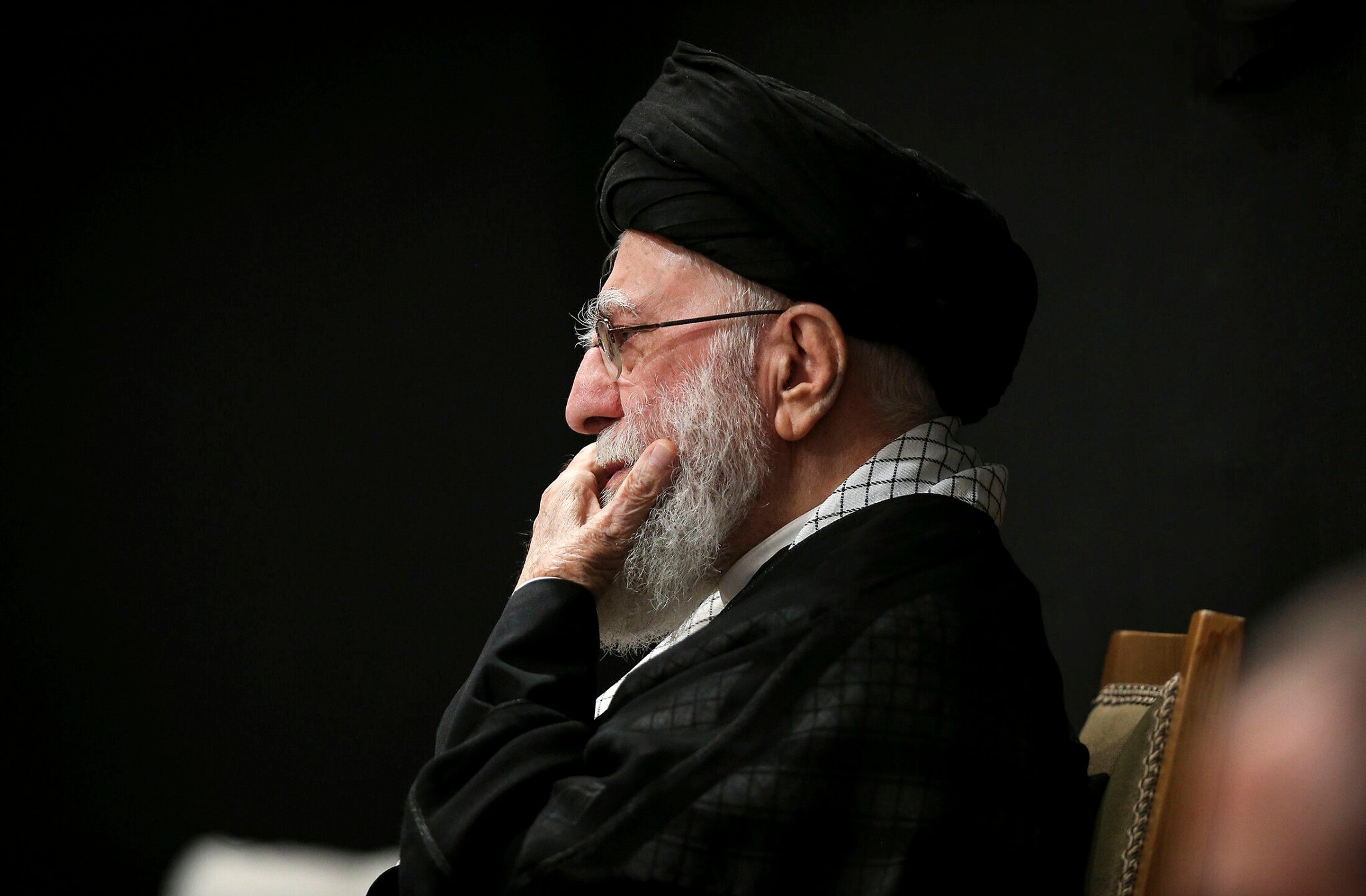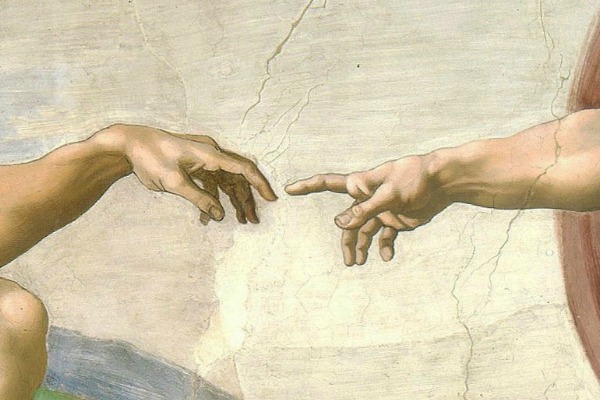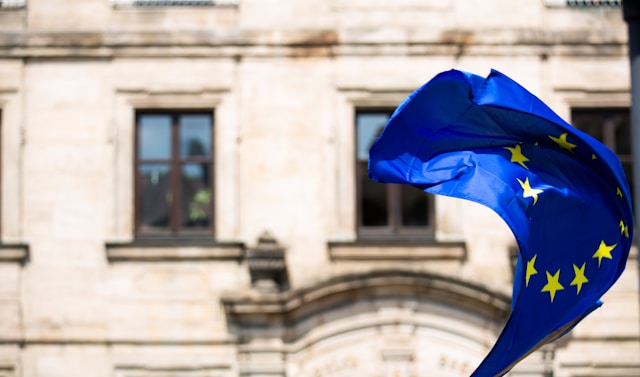
Kenan Camurcu
For those unfamiliar with the literature, a brief explanation first: The “minor occultation” (ghaybat-i sughra) in the title refers to the period in Twelver Shiism when the 12th Imam disappeared in the cellar of his family home in Samarra, Iraq, and communicated with his followers through four deputies. When these deputies died, the “major occultation” (ghaybat-i kubra) began. It is normal for the average devout person not to question the mythological narrative regarding the child imam’s inability to be found by Abbasid agents and soldiers in the aforementioned cellar, but his communication and transmission of messages through intermediaries, due to the sect’s structure being open to unconditional belief in unprovable extraordinary circumstances.
There are many critical studies indicating that this story is invalid, both in terms of Shia hadith methodology, historically, and from the perspective of Islamic theology (kalam). For instance, according to Shia narrative sources, no one witnessed the birth of the child claimed to be the Twelfth Imam. Nor was there any testimony to his mother’s pregnancy. Only the four aforementioned intermediaries claimed that the child imam was alive. In Shiism, the legitimacy of the jurist’s (faqih) guardianship (velayat) right derives from this intermediation.
According to Shia histories, Twelver Shiism was a small group considered ghulat/extremist within Shiism until the 12th century. Iranian thinker Abdolkarim Soroush reminds us that the Imams of Ahl al-Bayt were seen only as pure and pious scholars in their own time. Neither did they claim more, nor did their followers hold such a belief. Soroush says, “Today in Iran, we are extreme Shiites, meaning extremists.” In the text known as Ziyarat-i Jami’a-i Kabira, considered the creed of Twelver Shiites, it is stated, “The sustenance of creatures is in their [the imams’] hands. When we are resurrected on the Day of Judgment, we will appear before them, and they will judge us.” Soroush states: “Shiism was not like this in the beginning. It was a moderate movement. The people we call imams were pious scholars. Both Shiites and Sunnis agreed that these individuals were pure, untainted people. They were scholars, and everyone accepted their words. However, things like revelation coming to them, infallibility from sin, or possessing knowledge of the unseen were not present in Shiism.”
Eban b. Taghlib (d. 758), who had seen Ali, son of Hazrat Hussein (Zayn al-Abidin/Imam Sajjad), and was among the companions of Imam Ja’far al-Sadiq, described Shiism as follows: “When people differed on what came from the Messenger of Allah, they would take Ali’s word. And when they differed on what came from Ali, they would take the word of Ja’far b. Muhammad [Ja’far al-Sadiq].” (Najashi. d. 1058. Rijal al-Najashi. 1997: 12).
In other words, one does not need to be a Twelver Shiite to belong to the Ahl al-Bayt school. And certainly not to belong to the official Shiism in Iran. The theological doctrine of Twelver Shiism is not the only valid requirement for adhering to Hazrat Ali’s successorship and guardianship of the Prophet.
Soroush reminds us that Imam Ja’far al-Sadiq was the grandson of Abu Bakr, that he named his daughter Aisha, and that Hazrat Ali’s children were named Abu Bakr and Umar. He also shares an interesting anecdote: “A friend of ours was listening to a sermon by a teacher. The teacher was saying, ‘One of the believers went to Imam Musa al-Kazim, but the Imam showed him no interest. The man said: My master, I am your disciple and friend, why are you not showing me interest? The Imam said: Because you recently had a daughter and named her Aisha.’ This friend of ours, who had studied history, told the teacher: ‘You also know that Imam Musa al-Kazim had a daughter named Aisha.’ The teacher got very angry and did not speak to him until the end of the meeting.”
The reason for the similarity between the fiqh (jurisprudence) of Twelver Shiism and Sunni fiqh might be an effort to gain approval from the majority (amma) of Muslims to assert superiority over other Shiite branches. Khamenei’s strategy under the banner of the “axis of resistance” was actually this. While the assumption that Khamenei established the “axis of resistance” as a kind of Shia NATO is correct, his was primarily a military doctrine aimed at spreading among Shiite communities by gaining the approval of the Sunni majority. The most effective way to do this was to exploit the antisemitic anti-Israel sentiment in Sunnism and become the standard-bearer of the “Palestinian cause.” Otherwise, is there any other reasonable explanation for spending all resources to destroy Israel, which has no border with Iran?
I will address the psycho-political aspect of Twelver Shiism in detail in another article, so let’s suffice with this and return to our topic.
“Saddam was Caught in a Hole”
It is known that Khamenei entered a bunker in an unknown location at 03:00 AM on Friday, June 13, 2025, when the first wave of Israeli airstrikes began. As speculations increased, the head of the “Institute for Publishing Khamenei’s Works,” in a state television interview, claimed that “the enemy made great efforts to make the public anxious” when told that the public was curious and worried about the leader, and that many messages were received in this regard, and asked for prayers for Khamenei. These words further increased anxiety and uncertainty among his supporters.
Indeed, Khamenei has not appeared in public for almost 10 years. He only speaks to vetted visitors who have passed security screenings in his sterile campus. Even in the narrowly attended visiting program I participated in, despite the presence of distinguished figures from the Islamic world, we underwent several layers of strict security screenings. It was a far more stringent process than airport security protocols.
Despite this, for the first time in his 36-year rule, it was uncertain whether he would attend the Muharram/Ashura ceremony even within his own campus. The regime’s dignitaries and elite gathered in full attendance at his Husayniyya, eager to be in the photos, believing he would suddenly appear. The official photographers of the Beyt (Leader’s Office) carefully posed their cameras, highlighting the symbolic name of whichever faction they supported for the post-Khamenei era. At one point during the ceremony, Khamenei surprisingly emerged. Those gathered in the Husayniyya were ecstatic, finding solace in the appearance of the leader they had not seen for more than two weeks after the devastation caused by the 12-day war.
Foreign Minister Araghchi, in a message sent from Brazil where he was for the BRICS meeting, did not hide his surprise at Khamenei’s brief appearance: “The most beautiful photo I saw after arriving in Brazil.”
Whether the ghaybat-i sughra has ended, or if Khamenei will return to his life in bunkers, is not yet clear.
No one knows why Khamenei has not emerged since the war ended. The statements of Beyt bureaucrats or other famous figures, as if they are aware of the situation, are as reliable as the narrators who claimed to speak for the child imam who allegedly disappeared in the cellar in Samarra. Because it is well known that Khamenei does not communicate with anyone in his hiding places, which he frequently changes. No digital or frequency-based devices are used in those environments. So, no one is aware of his situation. They only know what the couriers tell them, and they exaggerate this little information and keep talking about it into microphones. In fact, they are exploiting the current crisis and chaos to the maximum extent as an opportunity to push themselves to the forefront.
While it is being said that Khamenei had no external contact during his “occultation” period, former IRGC commander Mohsen Rezaee told cameras that Khamenei personally managed the 12-day war. He even went further, comparing this war to the war with Saddam and claiming that Khomeini, due to old age, had appointed an intermediary commander in the Iraq war, which caused problems, thus elevating Khamenei above Khomeini. However, Khomeini, whom Rezaee called “very old,” was 80 years old when the war began and 88 when it ended. Khamenei is currently 86 years old.
It appears that Rezaee, who also tried to run for president, is narrating imaginary tales because he envisions a high position for himself after Khamenei. For example, before Trump’s attack, he had said: “If America attacks, I promise you, in the first week we will take 1000 Americans captive, and they will pay several billion dollars for each.” The opposition cleric Mohammad Rinani, mocking Rezaee’s bluff, said in an X post: “When economics and military affairs get mixed up, such a mess emerges, don’t even ask. This soldier-economist has no idea how much several billion dollars is. Also, will we take 1000 Americans captive? He has butchered the numbers.”
Aside from these, a speech by Khamenei when Saddam was caught in a hole was watched and shared millions of times on social media: “World history is full of lessons. What is the state of the cruel, arrogant, destructive Saddam now? He had to live in a hole. Ready to do all kinds of shameful things to save his dirty and disgraceful life.” Iranians are saying in thousands of video and written messages published on social media that Khamenei, like Saddam, is hiding in a hole and will be caught sooner or later. Some of them do not even feel the need to hide their faces and voices. Despite the regime starting to take revenge on dissidents after suffering a heavy defeat against Israel, the wall of fear seems to have been breached.
Qasem Mohammadi, a former member of the IRGC, wrote the message: “Until yesterday, he kept others under house arrest; now he keeps himself.” This is striking, of course. He is referring to the house arrest of Mir Hossein Mousavi, the former prime minister who won the 2009 presidential elections, along with his wife, in a house converted into a prison, on the pretext of protests that began after a coup prevented him from becoming president. This was done on Khamenei’s orders, without trial or interrogation. They are still imprisoned. For 16 years.
Khamenei’s Assassination Anxiety
Mohsen Sazegara, an important figure of the Iranian revolution, in an interview two days ago, attributed Khamenei’s failure to emerge from the bunker even after the ceasefire to either his death or his severe anxiety about being assassinated by the Israelis. Sazegara is a doctor of history and a politician who worked closely with Khomeini in Paris during the 1979 revolution and held high-level positions in revolutionary governments. He is also one of the founders of the IRGC, which was designed as a popular defense force to protect the revolution. After being imprisoned several times during Khamenei’s era, he was released due to a heart attack and health problems and emigrated to America. In 1994, when I invited Abdolkarim Soroush to a conference in Istanbul, Sazegara was his companion. During their stay as our guests, we had long conversations about Iran, the revolution, and the region. His analyses were quite good. A serious scientist and a good politician. In 1997, during my trip to Iran, he hosted me at the holiday village he had built for workers on the Caspian coast when he was deputy minister.
Sazegara states that despite the ceasefire, the Israelis are waging a shadow war and the hunters are pursuing their assassination list. For this reason, Sazegara says that Khamenei trusts no one and conveys insider information that his heir apparent son, Mojtaba, whom he wants to succeed him, is also kept in a separate location.
Sazegara’s assessment is as follows: “The leadership of the Islamic Republic is in disarray. After the killing of high-ranking IRGC commanders, the new commanders, who are successors of successors, are incompetent and incapable. They have completely abandoned electronic devices and communicate via courier. Khamenei constantly changes location in 17 or more bunkers. How can one imagine the country being governed in this state, communicating via courier? Khamenei has to wait for the courier to arrive to make a decision. There is a chaotic situation right now. Despite this, officials refuse to step aside, and the country is gradually heading towards collapse.”
Coup Option for Khamenei in Tehran
Israel’s slow but determined operations against Hamas, Hezbollah, Syria, and Iran have reached a peak level where the radicalism originating from Tehran will be read a eulogy. The Houthi tribe in Yemen does not need to be considered. I had previously written that it is merely a missile launchpad for the Quds Force.
It seems Israel’s war plan is not limited to stopping Iran’s nuclear capacity and destroying its missile launchpads. The operation will not be complete until the political regime in Tehran changes. It is clear that Tel Aviv will try every means to achieve this. Israelis support the coming to power of a government that will not harbor hostility towards Israel, either through a popular uprising or an internal coup. Since the continuation of the current regime has become certain to be impossible, various actors within the system and Iranian dissidents in the diaspora are intensely active to become players in a new revolution.
Although Prince Reza Pahlavi, residing in America, is very eager, even going so far as to stop using the Pahlavi surname and call himself “Javid Shah,” it seems impossible for him to find a place within Iran’s sociological equations. Aware of this, he contents himself with being a member of the “transition council” formed in America. However, when the Iranian regime was gasping for breath under Israel’s waves of attacks, he followed Khomeini’s path and took refuge in Paris for a while, waiting to be made leader of the country. But finding no success, he returned to America.
Monarchy is a phase in Iranian history that the Iranian people have left behind and overcome. Even if it is not the strange and anachronistic type of monarchy sanctified by religiosity in our country, and despite its secular nature, a constitutional monarchy would not be a regression. Therefore, change will occur with actors who take the 1979 revolution as their starting point. For this reason, the imprisoned leader Mir Hossein Mousavi has been advocating for radical change since 2009 with the slogan “return to the principles of independence, freedom, and republic of the revolution,” stating that the reform phase in the Islamic Republic has long passed.
There are signs suggesting that the internal contradictions of the regime are increasing. For example, the commander-in-chief Khamenei’s deputy, General Yahya Safavi, and the dismissed former commander of the IRGC (appointed head of the cultural headquarters), Mohammad Ali Jafari, did not issue a single message during the war. Jafari is the general who exposed that the military and paramilitary armed forces loyal to Qasem Soleimani attacked protesters in the 2009 protests. Of course, he did so while praising him.
Tasnim, the IRGC’s media outlet, issued a warning at the height of the war: “Some individuals with problematic and questionable records, even involving Qom clerics, will propose surrendering to Israel. A former official of the country will act as their spokesperson. That official has not yet responded to their request.” Tasnim later removed this news.
The individuals Tasnim referred to as “problematic and questionable” are thought to be the Larijani brothers. The elder brother, Ali Larijani, is a former Speaker of Parliament. His cleric brother, Sadegh Larijani, is also a former head of the judiciary. I had invited Sadegh Larijani to the “Islam and Modernism” symposium we organized in 1996 during Erdoğan’s time as mayor of Istanbul. He had no official position then. He presented an interesting paper on Fazlur Rahman and Islamic modernism.
It was claimed that the person mentioned in Tasnim’s assertion that a former state official would propose Khamenei’s surrender, even involving Qom clerics, was Ahmadinejad, and that he was preparing for a coup under the condition that cadres loyal to Khamenei were eliminated.
Ahmadinejad is the most complex politician in the history of the republic. He is intelligent, an organizer, and an expert in macro and long-term calculations. When Khamenei marginalized him and he fell out of favor, he did not hesitate to show his claws. Referring to the 2009 protests, he exposed that common criminals in prisons were used to create a pretext for military intervention in social events, and that they burned and destroyed everything, forcing the regime to back down. In his expose, Ahmadinejad cleverly praised the speech of IRGC General Hossein Hamedani, who was killed in Syria, for giving militias composed of common criminals the task of attacking protesters and burning shops. It is known that his influence within the IRGC and bureaucracy continues thanks to the effective staffing during his presidency.
Shortly before, Quds Force commander Esmail Qaani, whose photo was hung among the generals killed in Israeli attacks and whose memory was honored on state television, suddenly appeared in Tehran with the ceasefire. His PR team organized a “among the people” mise-en-scène.
The Qaani issue is one of the endless mysteries. He was in Lebanon when Nasrallah was killed. Where was he when the IRGC commander and the Army chief of staff were killed in Tehran while holding a meeting with force commanders and second and third-tier generals? Why was only Qaani not at the meeting? The answers to these questions are unknown. He is also one of those mentioned in the rumors of a coup against Khamenei.
Ideological Decay and Defeat Against Israel
While Mossad was setting up a drone base in the heart of Tehran, unbeknownst to all Iranian intelligence agencies, the regime made harassing women without headscarves or with disliked styles at metro exits its most important issue. While the scarf guardians were meticulously positioned to make life miserable for women, a drone factory that would carry out assassinations against force commanders and high-ranking generals was diligently working right under their noses.
The regime’s helplessness against Israel is a state of complete ideological decay. The National Security Council could not even convene once while the war was ongoing on Iranian soil. Analyses interpreting such indicators as the regime losing control are not unfair. The propaganda of Iranian radicals and their uncritical admirers that Israel suffered a defeat is comical.
Shortly before the Israeli attack, Khamenei had cut short the discussion by saying, “Neither will we negotiate, nor will there be a war.” Other high-ranking figures were mockingly explaining in the media that not only Israel but even America would not dare to attack Iran.
Speaking about the September 11, 2001 attacks, Khamenei said: “None of America’s leaders, the American president, vice president, and high-ranking officials, knew what was happening for two or three days. They disappeared. We are not like that. God forbid, if this nation is tested with a bitter experience, we ourselves will don our war clothes, lead the nation, and be ready for sacrifice.” Khamenei’s flight to a bunker before anyone else when the Israeli attack began is being widely ridiculed with this video.
In 2020, Amir Ali Hajizadeh, commander of the IRGC Aerospace Force, who shot down the Ukrainian passenger plane over Tehran, killing 176 passengers, was guaranteeing that no one would dare to attack Iran. He was one of those killed in the first wave of Israeli attacks. Ali Shamkhani, Khamenei’s closest advisor and former Secretary of the Supreme National Security Council, claimed there was no security threat to assassinate any official in Iran, and IRGC commander Salami also said, “If a single hair of Iranians is harmed, we will bring the world down on your heads.” The list goes on. Israel killed all of them in the first wave of attacks. Tehran’s rapid loss of over 20 generals in the first rank of its command structure was a surprise for Iranians as well as for the world. Naturally, it caused astonishment. It is unknown whether it should be attributed to Israel’s superior capability or Iran’s great weakness.
The killing of a country’s chief of staff, IRGC commander, force commanders, and high-ranking generals is a severe trauma, but the Tehran regime trivializes the killing of the entire general command of the IRGC and the Army, and all second-in-command figures. They do not dwell on it at all. The news of Quds Force commander Qaani’s death was brushed aside in the Iranian media. When the ceasefire was declared, Qaani appeared in Tehran, and again, it was not reported.
Officials are not dwelling on the fact that the IRGC’s main headquarters, along with all its units and buildings, have been rendered unusable, that all strategic centers and locations of the army have been destroyed, and that nuclear facilities, weapons depots, missile depots, helicopters, and fighter jets have been hit. This is because they do not want to appear weak in the eyes of the public, who are opposed to and resentful of the regime. However, Iran’s military archive, secret documents, operational plans, in short, its military memory and operational capability, have been destroyed. They have nothing substantial left except digital documents uploaded to the cloud. Israel easily hacks the documents in the cloud. There are no buildings left for commanders to hold meetings. In fact, they are not even holding meetings due to fear of assassination and being hit.
Iranian Foreign Minister Arakchi, after repeating phrases like “We slapped America in the face” and “We inflicted a devastating blow on Israel from which it cannot recover,” said he went to meet with Europeans “honorably by road.” This was because Israel had closed its airspace. Israeli jets were freely roaming in the skies over Mashhad. There was no air defense system, no Iranian fighter jets against them. There are no Friday sermons wagging fingers at defenseless protesters, no scowling clerics, no Khamenei, no army in sight, but plenty of media-driven bravado.
The True Story of the 12-Day War
Why did Tehran not strike Ben Gurion Airport? Military facilities, Haifa port, headquarters? Israel’s nuclear facilities are not meters underground like Iran’s; they are in openly known, visible places. Why did Iranian missiles not hit them? Did they only hit civilian areas, markets? Either due to missile incapacity or because they did not want to escalate the war.
The Iranian regime’s response to Israeli airstrikes is like a hiccup. Like those launched by Hamas from Gaza and Hezbollah from Dahiyeh as the anniversary of October 7 approaches. As the countdown continues and missile launchpads are destroyed, the number of missiles launched by Iran will decrease and eventually cease. In contrast, what is happening in Israel is destruction included in the Israelis’ cost calculation.
In military history, the most peculiar war might be the one between Israel and Iran, two countries without a shared border. Israel’s casus belli is relatively understandable. It claims that Iran uses its military, financial, and political power to wipe Israel off the map, increases its military capacity for this purpose, and seeks to acquire nuclear weapons, and therefore attacks Iran to defend its right to exist. It is true that the Khamenei regime wants to destroy Israel; they openly state this. It is also true that for this purpose, it uses proxy forces to attack Israel, allocates nearly 6 billion dollars annually to organizations fighting or preparing to fight Israel, and funds groups that spread anti-Israel propaganda in various countries, etc. In other words, as a sovereign UN member state, Israel has sufficient solid evidence.
Iran’s anti-Israel stance, however, is purely ideological. For years, Tehran has squandered its resources pursuing an overly romantic cause that argues Israel occupies Palestine and Jerusalem will be reclaimed. Panegyrists (professional praisers), in assemblies attended by Khamenei, shout that he will pray as a victorious conqueror in the Mosque of Umar (which they call Al-Aqsa Mosque), and Khamenei proudly listens to these praises, nodding in approval.
The Islamic Republic, which broke the historical record of support and protection for Semitic Israelis by non-Semitic Iran, is now making the Iranian people pay a heavy price for its initial wrong decision, as Israel has successfully organized its Semitic Arab cousins against Iran. However, it has been proven through numerous uprisings, suppressed with increasing violence and force each time, that the people will hold the regime accountable for this cost.
Israel’s “Rising Lion” operation, by destroying the coercive apparatus and brute force of a political regime that had already lost its moral and ethical energy and entered a process of collapse, hammered the final nail into its coffin. Intellectuals, artists, and politicians who reject Israel’s military operation believe that foreign intervention in the natural flow, when despotism has lost its legitimacy and is on the verge of collapse, only harms a new and clean beginning. Israelis, on the other hand, defend themselves with the argument that a radical regime on the verge of building an atomic bomb cannot be left to its own devices any longer, asking why nuclear facilities are built seventy, eighty, or a hundred meters underground if Khamenei swears no atomic bomb will be made.
Iranians are not starting civil resistance because they anticipate that while the regime cannot put up a fight against Israel, it still has the strength to respond with massacres and killings if the people take to the streets. They will likely weigh what remains in the prelude to a process that will likely begin with street clashes with regime forces before taking action.
Khamenei, who hid in the first hours of the Israeli attacks and has still not reappeared, is taking out his anger at the defeat against Israel on the people. To correct the image of a weakened regime, he is intimidating people, especially Kurds, with serial executions. While the Islamic Republic can engage in all kinds of disinformation, people are accused of being Mossad agents when they say on social media, “This is a war between Israel and the regime.” For example, Mohammad Amin Mahdavi, an ordinary and average Iranian, was executed on charges of “psychological and media operation against Iran.” The regime’s paid militias also stopped people fleeing bombs during the Israeli attacks on the roads, searched them for hours, wore them down, and intimidated them. The goal is clearly not to fight Israel; they fear a popular uprising at a time when the regime is exhausted, and they are preempting it.
The scenario where Tehran gave advance notice and received thanks and appreciation from Trump for striking the evacuated part of the US base in Qatar is a mise-en-scène that the Iranian people understand very well. They know that the regime is putting on this show to frighten and deter the opposition majority. It is very clear that the primary enemy of the absolute Velayat-e Faqih regime dominant in Tehran is not America or Israel, but its own people.
Translated by Gemini





0 Comments